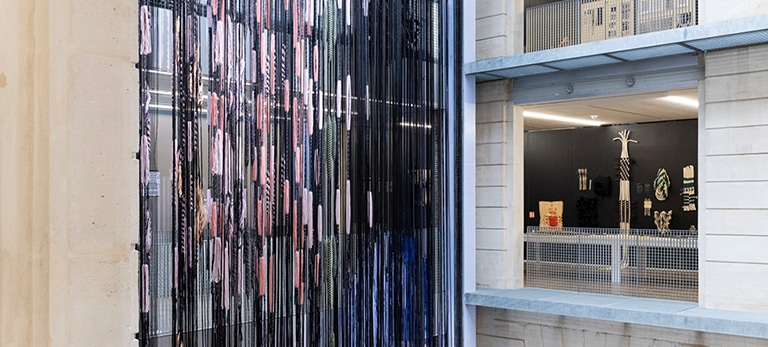Lafayette Anticipations, a foundation launched by Galeries Lafayette to promote contemporary design, gave artist Hella Jongerius carte blanche throughout summer 2019. She transformed the space into a large weaving mill open to the public with her exhibition “Interlace”. In a world of overconsumption and globalisation, the Dutch artist questioned our relationship to textiles and the issues at stake in their production.
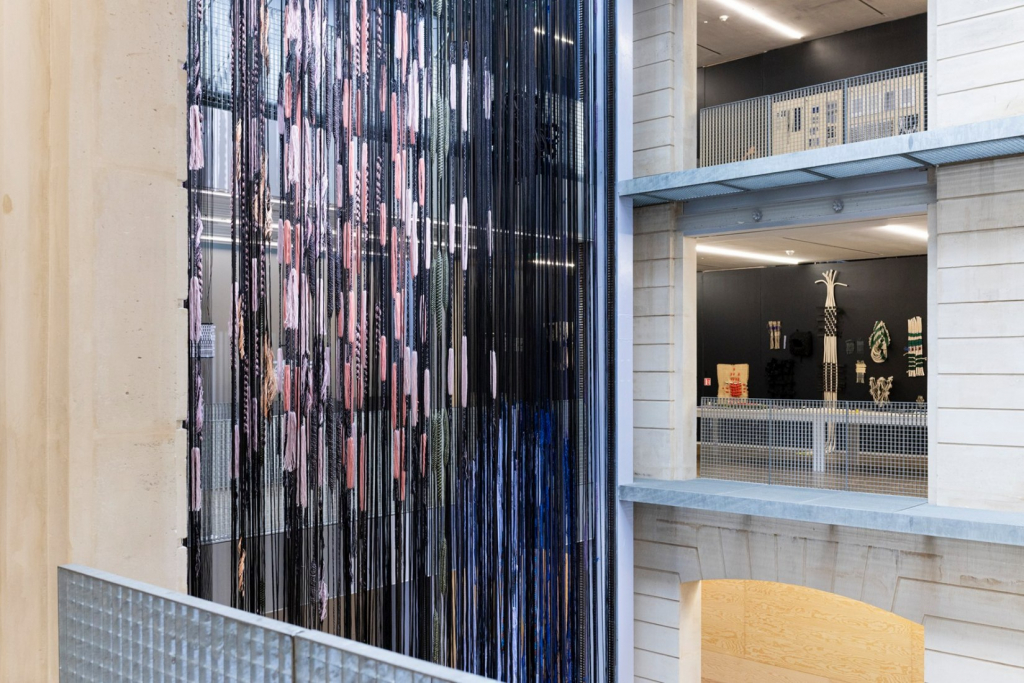
Showing the hidden side
The Jongeriuslab studio hung warp threads over 16 metres long from the ceiling of Lafayette Anticipations, completely transforming the exhibition space into a gigantic loom.
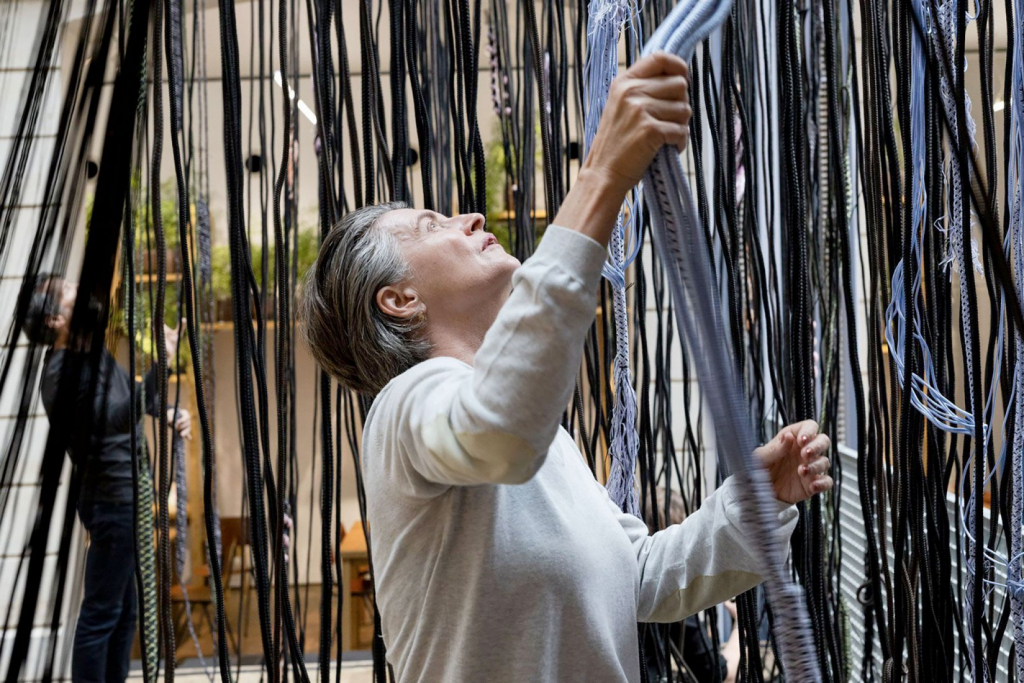
As all the threads were produced on site by three weaving looms and Jongeriuslab’s manufacturers, the exhibition was constantly evolving as the days and weeks went by, like an experimental laboratory.
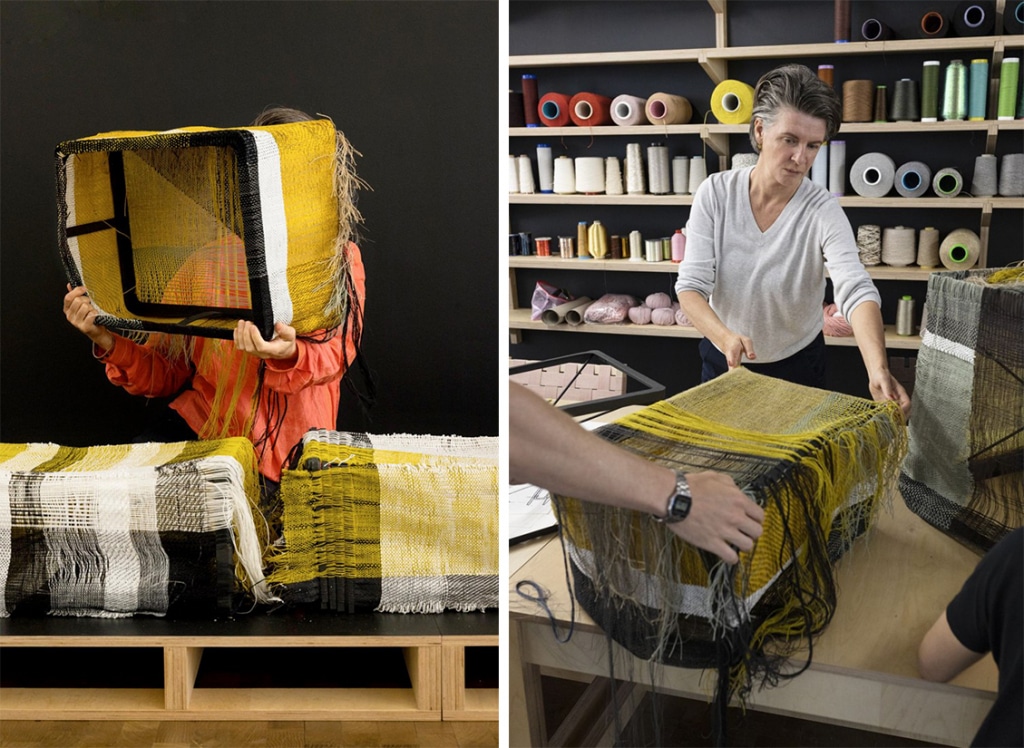
Gradually, the weavers created shapes and spheres, blending colours and offering a highly visual discovery of textile’s manufacturing secrets.
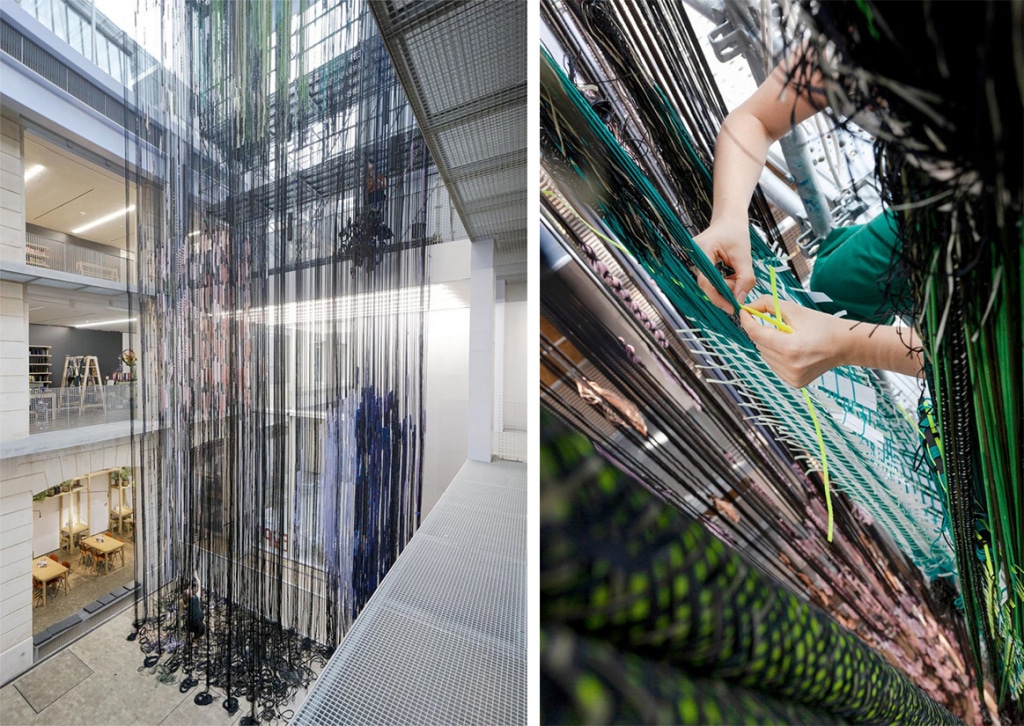
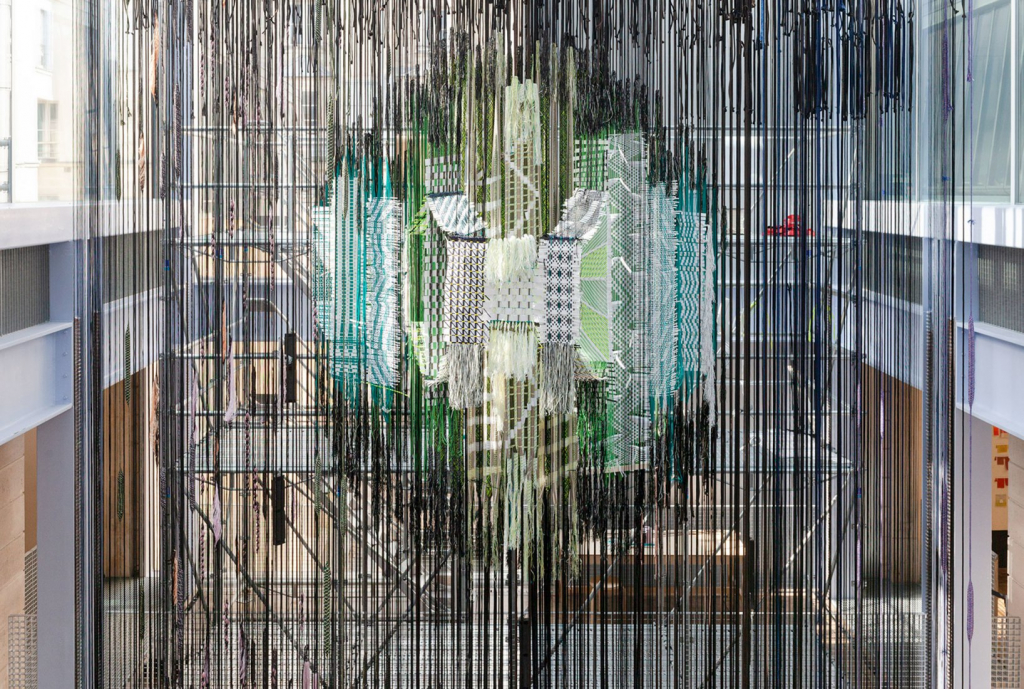
Questioning our relationship to textiles
The large scale of “Interlace” also served to question our relationship to textile consumption nowadays and highlight the consequences of its overproduction and consumption.
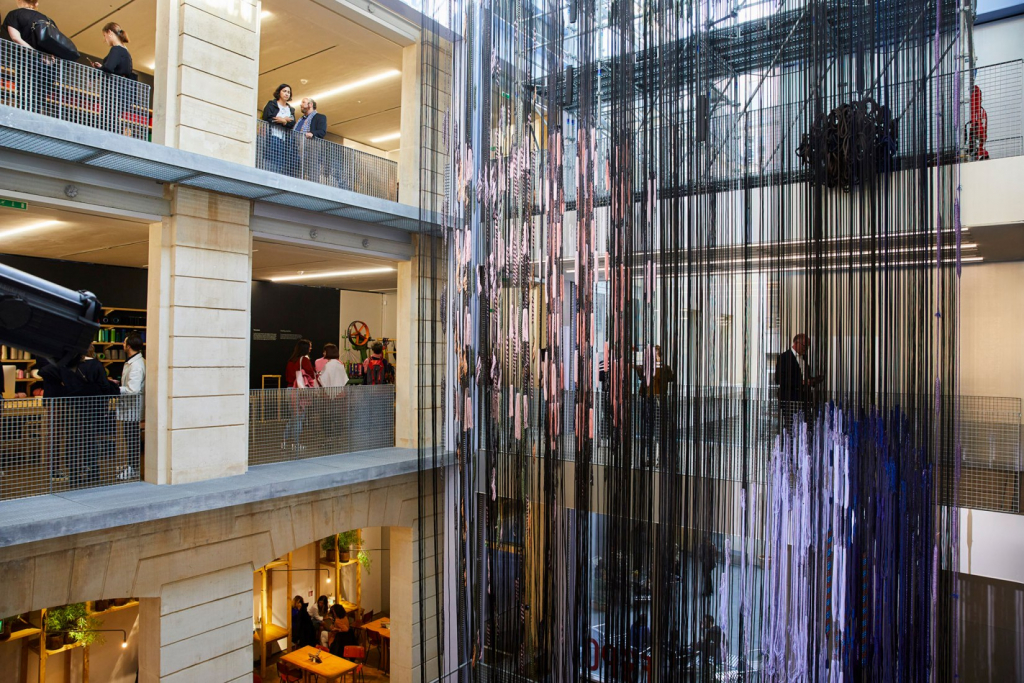
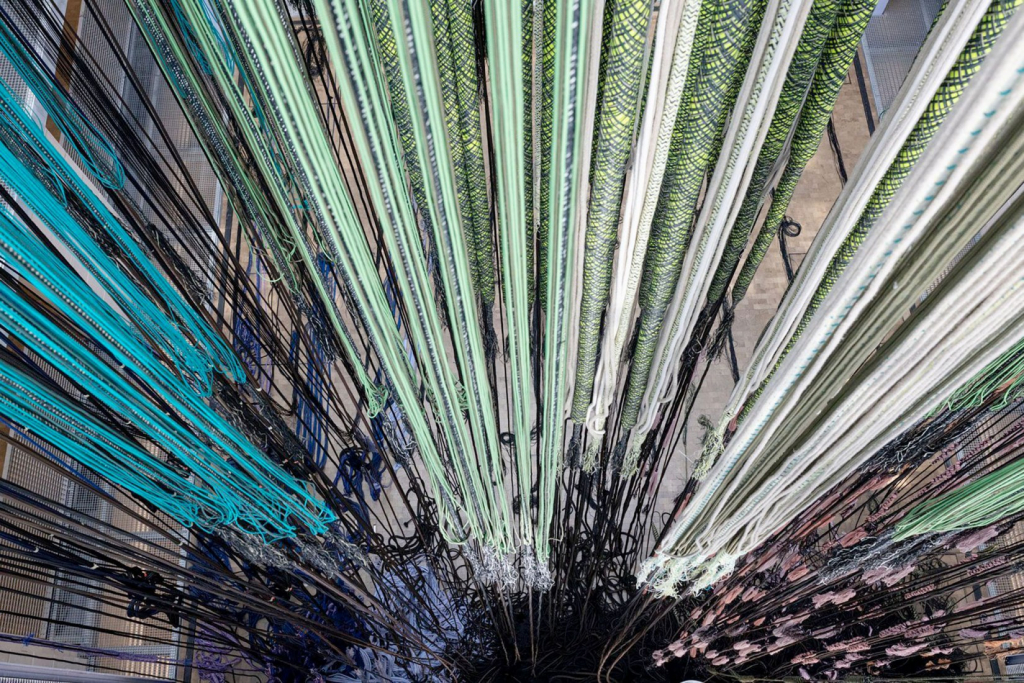
At a time of mass industrial textile production, Hella Jongerius wanted to display a more traditional and artisanal manufacturing method. With “Interlace”, she developed a real textile language and invited the viewer to rediscover emotion in her approach to fabric production.

